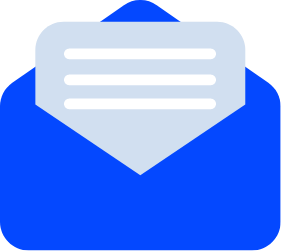


In any company’s employee retention strategy, benefits and employee perks do some of the heaviest lifting.
We know that people remain longer in roles and with employers who offer great benefits. That’s a major selling point for benefits providers, in fact. Companies like Spring Health and Brightside, which respectively let employers offer mental healthcare and financial wellness tools to their employees, tout the fact that their customers see significant reductions in employee turnover.
But benefits packages alone do not drive talent retention. There’s a larger strategy at work, and it involves knowing which benefits are most important to a specific person at a specific point in their career.
Allaya Cooks-Campbell at BetterUp has an extensive guide to employee retention that makes an important point: Some reasons for employee churn are controllable, and some factors fall outside of anything an employer can control (e.g. health or caretaking responsibilities, the employee’s family is moving cross-country).
The controllable factors Cooks-Campbell lists are instructive though. Those include:
Reward touches on at least three of those factors: Employee appreciation, employee compensation, and work-life balance.
Here is where retention strategy becomes important. Giving everyone a raise or implementing a work-from-home option for everyone won’t turn around employee churn numbers overnight. To understand why, it is necessary to explore the reasons people stay in their jobs.
“Studies have suggested that employees become embedded in their jobs and their communities and as they participate in their professional and community life, they develop a web of connections and relationships, both on and off the job,” the team at SHRM writes.
“Embedded” in this sense captures several ideas: a sense of belonging, a sense of purpose at work, a sense that one’s material needs are being looked after.
Beyond embeddedness, people want to feel recognized at work, too. “Employees derive value from engagement, from recognition that they are an important asset,” David Lomas at HR Aspects Magazine writes.
Keep those two concepts in mind — embeddedness and recognition — because those are useful in assessing talent retention strategy options.

The SHRM team outlines three ways a company can structure a reward strategy to encourage employee retention:
Crucially, HR advisor Josh Bersin’s research suggests salaries should not be tied to performance. Rather, people should get raises uniformly. This makes sense within the notion of embeddedness described above. It’s bonuses and additional perks that should be tied to performance. This honors employee need for recognition.
Companies with mature rewards models, he says, “pay people fairly, they adjust pay frequently, they communicate pay policies clearly, and they don’t pay out merit increases (they use cost of living and competitive wage adjustments) so they can pay bigger bonuses.”
Here are some things you can do to ensure you’re creating personalized rewards that foster a sense of embeddedness within the company and recognize people for their individual contributions.
Recognition is context-dependent. How you recognize an employee can vary based on:
The trick to solid retention strategy is to ensure you have lots of avenues for employee recognition.
This is an important aspect of embeddedness. An employee who enjoys mental, physical, emotional, and financial wellbeing is more likely to reward that investment with loyalty.
“Stress management programs, retirement planning services and reimbursement for fitness classes are just some examples of what your business might consider providing to employees in 2023 and beyond,” the team at Robert Half writes.
“For employees, it’s more important to have a choice of rewards than any specific reward,” the team at Blackhawk Network writes. “With most workforces being a diverse range of demographics spanning multiple generations, it’s impossible to second-guess their preferred rewards.”
As you outline all potential reward options, make sure that those make sense for people at all stages of their careers. A reward that’s meaningful to a senior staff member might not be as meaningful to a junior staff member.
For top performers especially, it’s best when you reward people for tangible results such as number of deals closed, the team at The Hartford writes.
“Only reward performance and behavior that directly impacts the company’s strategic goals or bottom line. If you reward fuzzy intangibles like ‘innovation,’ or ‘initiative,’ employees may chalk up a co-worker’s reward as favoritism.”

Bersin writes about how in one company where he worked, the team had access to dozens of benefit programs, “and nobody knew what they all were.”
When that happens, businesses squander a chance to reward a loyal employee, to make them feel recognized, and to retain a person in whom they have invested significant resources.
Whatever personalized rewards your company selects, make sure those rewards are accessible and easy to understand. There are three steps you can take to ensure this is so:
The uFlexReward platform is designed to make it easy for any company to offer personalized rewards in the creation of a strong talent retention strategy. To learn more, request a demo today.
Images used under license from Shutterstock.com.
